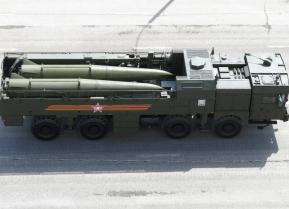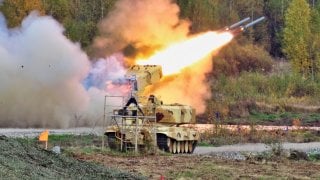The Russian Military Is Using Savage World War I 'Battlefield Tactics' in Ukraine War
Recent Russian tactical gains in southern Donetsk have added pressure on Ukrainian forces, with notable progress near Vuhledar and towns like Hirnyk and Kurakhivka, according to British Military Intelligence. This progress includes the capture of small towns over a 20 km front, bolstering Russia's ability to threaten Pokrovsk, a key Ukrainian logistics hub.
Key Points: Recent Russian tactical gains in southern Donetsk have added pressure on Ukrainian forces, with notable progress near Vuhledar and towns like Hirnyk and Kurakhivka, according to British Military Intelligence. This progress includes the capture of small towns over a 20 km front, bolstering Russia's ability to threaten Pokrovsk, a key Ukrainian logistics hub.
-Despite suffering high casualties—over 1,000 per day on average—Russian forces sustain these advances with continuous recruitment, using attrition tactics that Kyiv resists to preserve its manpower.
-As the conflict drags on, Russia’s numerical advantage in troops remains a strategic hurdle for Ukraine.
Russia's Relentless Tactics Yield Gains Despite Rising Losses
The Russian forces have made significant tactical progress over the past few weeks. Although the Russian military hasn’t been able to achieve an operational breakthrough that would open the way to winning the war, the tactical successes are putting pressure on the Ukrainian forces.
Russian Tactical Gains and the Big Question
In its latest assessment of the conflict, the British Military Intelligence estimated that “in southern Donetsk oblast, Russian forces have made advances in several areas along a 20km wide front.”
“Russian forces have seized control of several small towns and advanced up to 9km in some areas within the space of a week. These advances follow from Russia gaining control of Vuhledar at the beginning of October 2024,” the British Military Intelligence assessed.
Since September, the Russian forces have been making slow but gradual progress in certain parts of the contact line. The Donbas has been mostly where the Russian forces have been making gains, though the area around Kharkiv in eastern Ukraine is also an active one.
“Also in southern Donetsk oblast, Russian forces seized the town of Hirnyk and claim to have captured Kurakhivka. 15km southeast of Pokrvosk, Russia seized Selydove, which likely further sets conditions for Russia to threaten the logistics hub of Pokrovsk,” the British Military Intelligence added in its operational estimate.
The Ukrainian military is fighting hard to maintain its control in Pokrovsk, a key logistical hub on that part of the battlefield that would be a significant blow if it were to fall to the Russian forces. For one thing, it would limit the Ukrainian military’s ability to conduct both offensive and defensive operations in the sector.
“Russia continues to prioritise the southern Donetsk frontlines maintaining favourable force ratios in this sector, which partly explains the increased pace of Russian advances,” the British Military Intelligence stated.
The big question is for how long the Russian military can sustain the rate of advance? Because it doesn’t come cheap. For over six months now, or 180 days, the Russian forces have been averaging more than 1,000 casualties each day. Sometimes, the average rises to even 1,300 casualties per day for a few weeks. And yet, despite the heavy losses, the Russian military continues to have enough men to sustain its World War One-tactics on the battlefield.
“Despite heavy personnel losses, Russia continues to recruit high numbers to sustain its operations in southern Ukraine,” the British Military Intelligence concluded.
And the high rate of casualties is partly the reason behind the recent tactical success of the Russian forces on the ground. Simply put, Moscow can put more men on the meatgrinder, and it doesn’t care. Kyiv, conversely, has been very reluctant to commit all of its manpower to the conflict, arguing that there needs to be enough young men to power the economy after the war. Western military aid can help the Ukrainian military kill and wound more Russian forces, but troop numbers are also important. And in that regard, the Russian military has a clear advantage.
About the Author
Stavros Atlamazoglou is a seasoned defense journalist specializing in special operations and a Hellenic Army veteran (national service with the 575th Marine Battalion and Army HQ). He holds a BA from Johns Hopkins University and an MA from the Johns Hopkins School of Advanced International Studies (SAIS). His work has been featured in Business Insider, Sandboxx, and SOFREP.
Image Credit: Creative Commons and/or Shutterstock.


